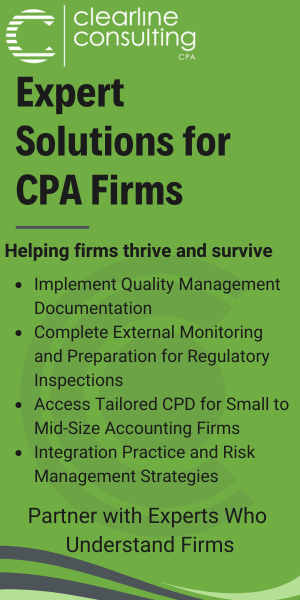Understanding wage subsidies at year-end

Rachel Fisch of Wagepoint on TWS & CEWS compliance in time for 2020 year-end
 |
Rachel Fisch is a strategic advisor at Wagepoint. |
Year-end reporting is complicated in a normal year — in 2020, it’s “rocket surgery.”
This year saw the federal government introduce two different wage subsidies to support small businesses during the COVID-19 pandemic: the 10% Temporary Wage Subsidy for Employers (TWS) and the Canada Emergency Wage Subsidy (CEWS). Both subsidies are considered income for the small businesses who took advantage of them and, as such, they each have specific reporting requirements.
If you and your small business clients are feeling overwhelmed, you’re certainly not alone. This overview will walk you through the ABCs of the wage subsidies.
10% Temporary Wage Subsidy (TWS)
The TWS is a three-month measure that was introduced in March 2020 to subsidize cash flow for business owners. The subsidy covers 10 per cent of the wages paid from March 18 to June 19 — up to maximum of $1,375 per qualifying employee. It caps out at $25,000 for each eligible employer. Although TWS is now over, employers can retroactively claim it until the end of the year, providing the earnings were within the three-month window.
For bookkeepers, accountants, and business owners who use Wagepoint, applying the TWS was a breeze. By building the 10 per cent calculation right into the product — stopping when the maximum was reached — Wagepoint ensured all eligible companies instantly saw the benefit of this program. This tool is still active for those who have yet to take advantage of the TWS.
Canada Emergency Wage Subsidy (CEWS)
The CEWS is best thought of in two parts: CEWS 1.0 and CEWS 2.0.
CEWS 1.0 can be claimed until the end of the year. The program spanned four pay periods, from March 15 to July 4, and provided a 75% wage subsidy for eligible employers, capping out at $847 per week. Also included in CEWS 1.0 was a 100% government refund for employer-paid EI and CPP/QPP contributions for employees who were out of work due to the pandemic.
In order to qualify, employers needed to experience a 15 per cent drop in revenue in March, and a 30 per cent drop in the following months. However, to provide stability, employers that qualified for the first month automatically qualified for the second month, and so on.
CEWS 2.0, which has now been extended until June 2021, lets eligible employers qualify for an 85 per cent wage subsidy, capping out at $960 per week.
The amount received depends on three factors: (1) the severity of revenue drop, (2) the claim period, and (3) the average three-month revenue drop. In order to receive the full 85 per cent subsidy, employers must have seen a 70 per cent decline in revenue, but unlike with CEWS 1.0, employers who did not see a 30 per cent revenue drop still qualify for a subsidy.
Note: According to the Canada Payroll Association, COVID-19 has resulted in more than 250 federal and provincial changes. As quickly as things are changing, it’s always best to check CRA’s communications directly.
Year-End Reporting
So what does all this mean for your clients’ reporting? Here’s the thing to remember: TWS and CEWS should be viewed as income for employers, and therefore it needs to be reported. This is true even if your clients have yet to receive a subsidy that they’ve applied for — it still needs to be claimed within the period in which it falls. Subsidy amounts need to be reported as income in Line 101 of their GST and HST returns.
For TWS, employers must submit the PD27 10% Temporary Wage Subsidy Self-Identification Form for Employers by the end of February. There’s a fillable version on the CRA website to make things easier. Note that the PD27 must be filed directly through the CRA — so Wagepoint can’t file it on your behalf (sorry!).
Besides the standard T4 information usually provided at year end, the 2020 T4s will essentially be used as an audit tool by breaking down a segment of earnings into specific date ranges. This allows the CRA to validate the amounts received by Canada Emergency Response Benefit (CERB) recipients. Be sure to report the subsides with the four corresponding codes:
- Code 57: Employment income – March 15 to May 9 — Periods 1 & 2
- Code 58: Employment income – May 10 to July 4 — Periods 3 & 4
- Code 59: Employment income – July 5 to August 29 — Periods 5 & 6
- Code 60: Employment income – August 30 to September 26 — Period 7
And remember, when claiming the subsidies, it’s based on wages earned. But for reporting, it’s based on wages paid. Clear as mud?
 |
For bookkeepers, accountants, and business owners who use Wagepoint, applying the TWS was a breeze. This tool is still active for those who have yet to take advantage of the TWS. (WAGEPOINT) |
Wagepoint once again comes to the rescue by pre-filling these amounts based on payrolls run within the year. You also have an opportunity to make any corrections prior to the filing of T4s. In fact, when at least two regularly scheduled payroll runs are completed in Wagepoint, we will automatically process and submit them as well!
I think we can all agree it’s time to close the books on 2020.
Rachel Fisch is a strategic advisor at Wagepoint.










(0) Comments